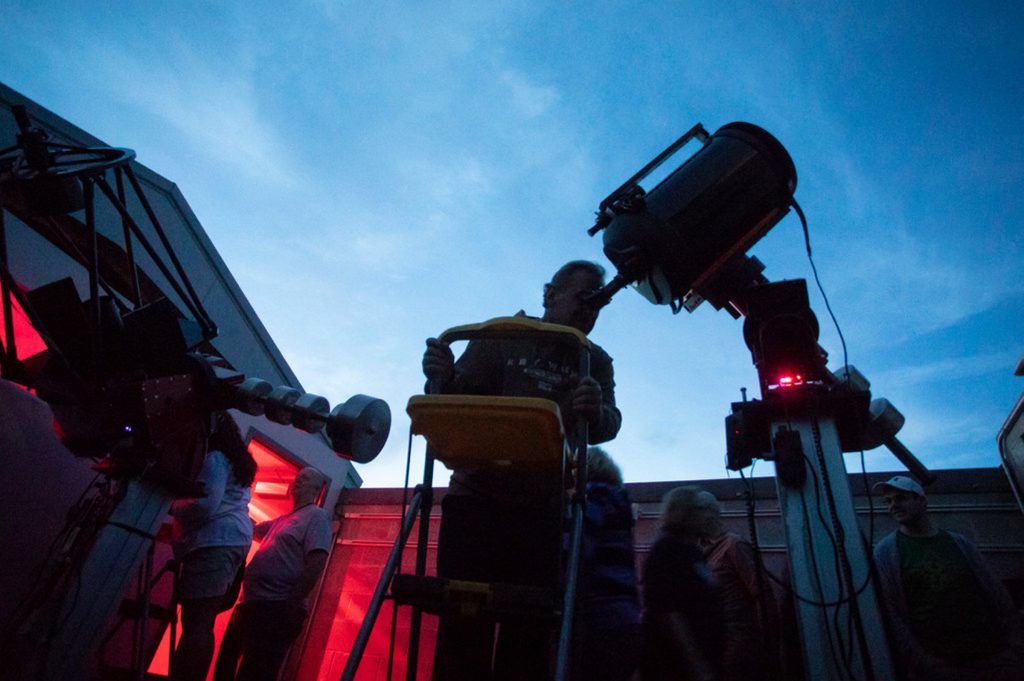As winter yields to the coming spring, we see the field of bright stars making winter’s night, shifting to the southwest in the evening hours once darkness falls.
This Saturday, March 13 at about 8:30 p.m., Orion, with its famous three-star belt, will be just right of due south. You have all evening to watch Orion glide southwest, and see it descend below the western horizon around midnight.
Of course, those of that switch to Daylight Savings Time before 2 a.m. this Sunday, will be moving the clock ahead one hour. That means we’ll need to wait another hour to see the stars, so Orion will be setting about 1 a.m., Monday morning.
The bright side (literally bright) is that we have the light of our favorite star, the Sun, another hour before it too sets in the west!
In May we will be losing Orion to the glare of twilight. In the wee hours of July, we can expect to go out and begin to see Orion’s return, rising eastward ahead of the morning Sun.
While the “spring stars” and constellations have a wonder and beauty all their own, be sure to admire the bright winter stars before we must share them with the Sun’s overwhelming brilliance.
If you live in cold climes like I do, winter nights can get very chilly. As much as we might want to, it can be hard to be outside for very long under the stars in the dead of winter, without being very prepared. It seems the clear nights are the coldest, as the warmth of the day ebbs away.
Think about all those stars above us, each one fiery hot, yet their combined heat does not extend across the immense distances of interstellar space to keep us snug. At least we have the Sun, only 93 million miles away, to warm us and give s life.
The next clear evening, be sure to admire the Pleiades star cluster, still high in the south-southwest when darkness falls.
Immediately to the left (or east) is the bright point of red-orange light from Mars. Look over to the right of Mars from the bright red-orange star Aldebaran. This past week Mars was about halfway between Aldebaran and the Pleiades.
It’s an amazing sight: the star and planet currently are about the same magnitude and same color.
That’s where the similarities end.
Aldebaran is a massive star, a red supergiant about 35 to 40 times the width of the Sun. If it took the Sun’s place, its surface would nearly reach Mercury. It is about 153 times as bright as the Sun and has a surface temperature of around 6700 degrees F. (the Sun is even hotter, 10,000 degrees F.).
Aldebaran is just over 65 light years away; that’s how long it takes its light to reach us in years, each light year being about 5.8 trillion miles (trillion with a “T”).
Mars of course is a planet, a rocky globe about a third the Earth’s size at 4209 miles. It is a planet we now believe where water once flowed in abundance; at least frozen water lies beneath. There might be fossils of life, and maybe life still existing, below the surface. A Martian summer day at the equator can reach +70 degrees F. but can drop to -100 F. at night!
Earth’s armada of spacecraft whiz around Mars or drive its dusty and rocky land, preparing for potential landings of humans in decades ahead.
Mars is much closer than Aldebaran, currently 148.5 million miles. The reflected sunlight off of Mars, at this distance, takes 145.84 minutes (2.43 hours). That’s also how long it currently takes NASA and other space agencies to receive back signals from the planet.
But to the naked eye they look very much the same- except that Mars is moving along, ever so slowly, night to night against the backdrop of stars.
Truthfully, Aldebaran is moving along too, like all the stars, as they orbit the galaxy, but their motion is not nearly as evident- again due to the incredible distances.
Look further left to the bright red star Betelgeuse in the upper left corner of the Orion constellation. Compare Betelgeuse and Aldebaran.
Betelgeuse is currently noticeably brighter. We’re glad to see that, too. Remember a year ago: Betelgeuse, a variable star, started an unusual dip in brightness, bringing it to a historic low, not quite +2nd magnitude last winter. Astronomers, professional and amateur were puzzled. Would it ever rise again? Thankfully, it did.
The prevailing theory is that Betelgeuse expelled a large cloud of dust that temporarily dimmed the star.
This time of year, I also enjoy the Big Dipper. Look north, the next clear evening. The Dipper seems to be making it’s “spring leap” as if it was jumping up and over the North Star, celebrating spring’s soon arrival on March 20.
Bright stars yet ahead: In late evening look east for the bright orange star Arcturus, a sure sign of spring.
The crescent Moon graces the western sky this week; First Quarter is on the 21st.
Keep looking up at the sky.
— Peter Becker/Tri-County Independent via Associated Press




